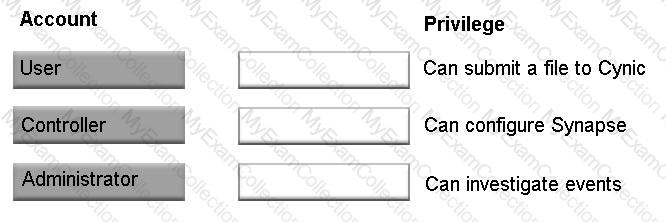In which scenario would it be beneficial for an organization to eradicate a threat from the environment by deleting it?
Which two steps must an Incident Responder take to isolate an infected computer in ATP? (Choose two.)
What is the minimum amount of RAM required for a virtual deployment of the ATP Manager in a production environment?
Which Advanced Threat Protection (ATP) component best isolates an infected computer from the network?
Why is it important for an Incident Responder to review Related Incidents and Events when analyzing an
incident for an After Actions Report?
An Incident Responder launches a search from ATP for a file hash. The search returns the results
immediately. The responder reviews the Symantec Endpoint Protection Manager (SEPM) command status and
does NOT see an indicators of compromise (IOC) search command.
How is it possible that the search returned results?
Which level of privilege corresponds to each ATP account type?
Match the correct account type to the corresponding privileges.

During a recent virus outlook, an Incident found that the incident Response team was successful in identifying malicious that were communicating with the infected endpoint.
Which two (2) options should be incident Responder select to prevent endpoints from communicating with malicious domains?
How does an attacker use a zero-day vulnerability during the Incursion phase?
Which two actions an Incident Responder take when downloading files from the ATP file store? (Choose two.)


